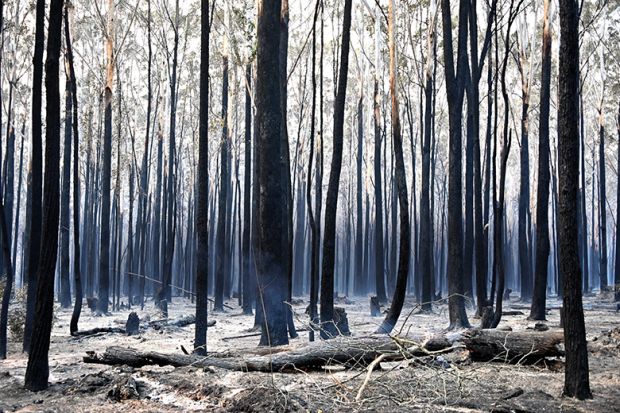Talk of any global crisis other than the coronavirus may seem a little out of place in the current circumstances. Yet it is easy to forget that when news of the outbreak in Wuhan began to emerge in December, Australia's catastrophic bushfires had been monopolising headlines around the world for weeks, as blazes of unprecedented ferocity and voracity razed forests, farms and fields in every corner of the wide brown land. And the response of Australia's universities to an issue that poses a greater long-term threat to the nation and the world – climate change – is every bit as crucial as their current response to Covid-19.
Australia is no stranger to calamitous bushfires, as survivors of the 2009 Black Saturday fires (173 people killed) and 1983’s Ash Wednesday (75 fatalities) can attest. The most recent crisis claimed 33 lives, with at least one more death blamed on bushfire smoke. But unlike the earlier catastrophes, each of which unfolded over a day or two of horror, this summer’s disaster started when winter was barely over, and it raged for almost six months.
The result was the scorching of 20 times as much of Australia as Black Saturday and Ash Wednesday combined: an area roughly as big as England (and substantially bigger if you include scrub fires in the country’s north) and about 21 times the area blackened by last year’s headline-grabbing Amazon fires. The Gospers Mountain fire north-west of Sydney was Australia’s largest forest fire ever recorded, engulfing more than 5,000 square kilometres, according to an 11 March report from the Climate Council of Australia. That single fire, one of more than 11,000 recorded since mid-2019 in New South Wales alone, burned out an area more than three times the size of Greater London.
The fires charred rainforests long considered too wet to burn. A roadhouse in the almost treeless Nullarbor Plain became a temporary home to truck drivers and tourists as fires blocked the main highway between South and Western Australia for weeks. Residents in the eastern states reported fire behaviour never before encountered. Wind shifts saw their homes threatened again and again as the fires returned, advancing over paddocks burned out just days earlier.
A billion or more native animals were incinerated and almost 3,000 homes were destroyed, along with thousands of other buildings. The fires released more carbon dioxide than Germany does in a year, according to the Climate Council. Smoke blanketed Sydney, Canberra and Melbourne for weeks. Each city took turns to claim the worst air quality in the world. Nasa tracked the smoke's circumnavigation of the globe, until it was detected in Perth after travelling the long way around to Australia’s west.
Firefighters reported a surge in “pyrocumulonimbus” clouds: bushfire-generated storm systems capable of producing lightning, freak winds, soot-blackened hailstones and even tornadoes. Long associated with volcanic eruptions and, more recently, nuclear explosions, these massive clouds are becoming a terrifyingly familiar feature of Australia’s bushfire seasons.
But this worst of Australian summers brought out the best in its people. Many gave their time – and some their lives – to protect and shelter each other. And universities that had been settling in for semester break downtime rolled up their sleeves and contributed in a very non-ivory tower way, as campuses morphed into operations and accommodation centres for the emergency services.
Universities provided overflow refuges for bushfire evacuees who could not be housed in the main crisis accommodation centres, and put hundreds more beds on standby. They harboured and treated displaced livestock, coordinated fundraising appeals and launched search and rescue missions for injured koalas.
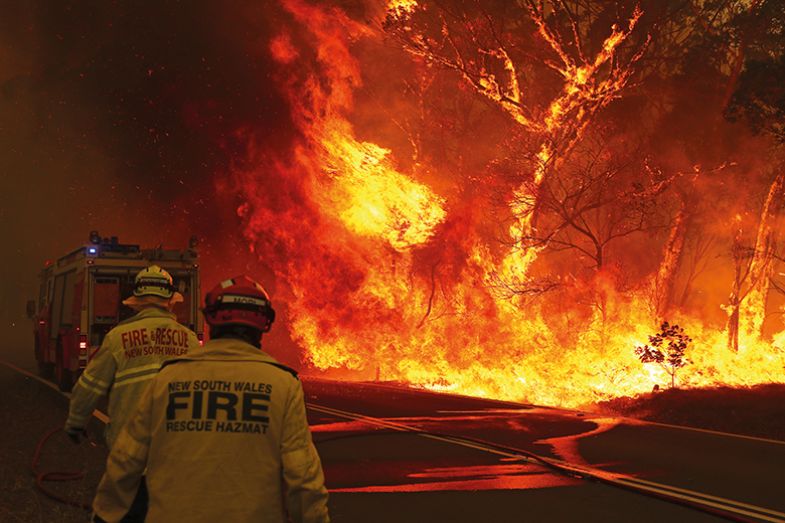
Nevertheless, with the flames now doused, the time has arrived for universities to review their role in a country that will never be quite the same again. And it is a self-appraisal that should go beyond their response to fire, or even natural disasters in general, and address the changing climate widely regarded by scientists and the public – if not necessarily all politicians – as a dominant factor in the summer crisis.
Queensland University of Technology (QUT) vice-chancellor Margaret Sheil says that universities are going to have to grapple with such questions whether they like it or not, redoubling their efforts in sustainability-related research and teaching and ensuring that their own environmental houses are in order.
In Sheil’s estimation, initiatives that were once optional, like jettisoning investments in high-emission industries and setting goals for carbon-neutral campuses, are now mandatory. “The expectations are changing,” she says. “People are looking at things we’re doing, saying: ‘You’ve been talking about this. Now what are you doing as institutions?’”
Universities have traditionally been in the vanguard of the climate change conversation, she says: “We’ve got people with scientific literacy and large populations of young people who are very much ahead of some of their elders.” But with even business now talking the language of sustainability, “the community’s catching up”, Sheil adds.
According to Justin Bokor, a higher education consultant who was formerly a commercial director at Monash University in Melbourne, universities are turning themselves into “living laboratories”: a variation on the long-standing tradition of scientists experimenting on their own bodies. He cites Deakin and Monash universities’ efforts to boost energy efficiency through microgrids (localised electricity generation) on campus. Other examples include installing green walls and roofs, using excess pressure in the water mains to generate energy, investigating on-campus food production, replacing car parking spaces with bicycle facilities and installing electrical vehicle charging stations.
Universities are also collaborating in green power purchase agreements to stimulate emissions-free electricity generation. RMIT University, Deakin and the University of Melbourne are partners in the Melbourne Renewable Energy Project, an alliance with the city council, businesses and cultural organisations that combined their purchasing power to support the construction of a 39-turbine wind farm in western Victoria.
Attila Brungs, vice-chancellor of the University of Technology Sydney (UTS), says one of his academics spent a year combing through “Byzantine legislation” to work out how to purchase renewable power directly from a producer rather than through an energy retailer. UTS then signed an advance contract with entrepreneurs who wanted to establish a solar farm in the Hunter Valley of New South Wales.
The entrepreneurs could then “take that contract to a bank”, Brungs says, to secure a loan to build the farm. “The reason we took the time to do that is so that everybody could do it. Now there are dozens of these contracts springing up, directly purchasing renewable energy, which you’d never been able to do before. We could use our knowledge as a university to change things around – not just buy green energy and feel good about it, but change the system so that other people could do it.”
But universities aren’t in the sustainability game purely for altruistic reasons, according to Bokor. He says that embedding energy saving, water efficiency and biodiversity restoration features in capital programmes is also a “strategic” ploy to earn reputational benefits and open up green finance options. He cites two sustainability bonds issued in 2018 by Macquarie University, netting it A$250 million (£126 million) to rejuvenate its Central Courtyard precinct. The project included creek rehabilitation and construction of buildings with five-star environmental ratings. London-based news service Environmental-Finance.com last year gave the deal its “sustainability bond of the year” award in the corporate category, crediting Macquarie for a “pioneering transaction” that had attracted “strong interest” from “high-quality asset managers”, enabling it to obtain credit on the “tightest” terms.
In 2017, the Australian Catholic University obtained A$200 million – and could have raised more than double that amount – by selling sustainability bonds to finance socially oriented research programmes and to refinance loans for buildings with at least five-star green ratings. And in 2016, Monash claimed bragging rights as the first university in the world to raise funds from a climate bond, after securing A$218 million through green bonds issued in the US.
Universities are also introducing ethical procurement and investment strategies, reducing and offsetting their air travel and embedding sustainability in their curricula. And they are setting deadlines for eliminating their campus carbon footprints – mostly by 2030, sometimes by 2025, or even, in particularly ambitious cases, by the end of this year. “The clock’s ticking,” Bokor says, predicting that any university that has not already announced plans for becoming carbon neutral will do so this year.

The Australian National University (ANU) has gone one better, vowing to become carbon negative. “The world is looking to us…for solutions,” declared the university’s Nobel laureate vice-chancellor, Brian Schmidt, in his annual State of the University address on 7 February.
Mark Howden, director of the ANU Climate Change Institute, has been given the job of spearheading the “Below Zero” initiative. “We’re looking to show that it can be done, and how it can be done,” Howden says, adding that the university will initially pursue a “hybrid” approach “to get rapid runs on the board”.
That means using energy more efficiently and reducing emissions – through changes to travel, research and heating, for example – while offsetting the emissions that cannot be avoided. Electric cars are easily harnessed, but “zero-emissions flying is not a viable proposition” yet, Howden concedes.
In the longer term, the ANU plans to pursue innovative techniques that absorb more emissions than the institution produces. These include plant- and soil-based carbon sequestration and “enhanced weathering”, whereby ground-up rocks are spread on soil to trap atmospheric carbon as they break down. “We’ve got some research happening on that,” Howden says. “Then there’s what we call direct air capture techniques, which capture CO2 in usable products, particularly polymers.”
Research groups elsewhere have used direct air capture to synthesise petrol or aviation fuel replacements and to stimulate crop growth in greenhouses. Such negative emissions technologies, while experimental, are considered essential in avoiding catastrophic climate change. “It’s about developing the technology and lowering the price point,” Howden says.“We can really capture the imagination of staff and students, integrating these activities in both the research and teaching remits of the university. Increasingly, this is going to be something that’s valued in the marketplace – the science marketplace as well as the jobs marketplace.”
But Howden acknowledges that the value of all this effort lies as much in its symbolic impact as its direct climatic impact: “ANU is a small contributor to Australian emissions – we’re just a few kilotonnes, compared with hundreds of megatonnes across Australia. But just because we’re a small emitter doesn’t mean we don’t have a responsibility. That argument has been used at an Australian level: we’re only 1.3 per cent [of global emissions]. We [at the ANU] don’t buy into that. Every small emitter can contribute to the bigger goal.”
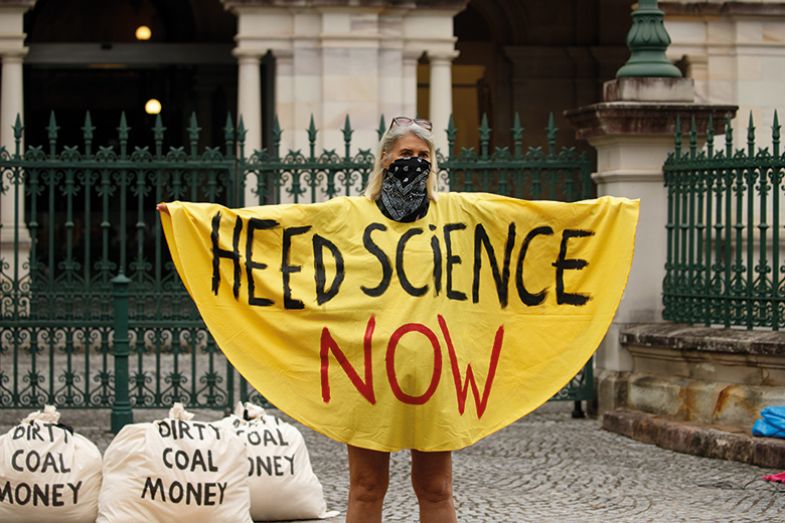
Some Australian politicians resist the widespread scientific consensus around the need for urgent action to alleviate climate change – a reaction often attributed to the economic clout of Australia’s coal exports, which typically rake in somewhere between A$48 billion and A$84 billion a year. Even when international education exports peaked at A$39.9 billion in 2019, before the spread of Covid-19, coal was still earning the country some 76 per cent more.
“The difficulty in the Australian context is that we haven’t got federal political acceptance of the reality of the situation,” says David Lloyd, vice-chancellor of the University of South Australia. “We still have the old economic imperative of exporting the problem without recognising that CO2 blows around the whole world.
Lloyd notes Australia’s “tendency towards anti-intellectualism”. However, he insists that the reality of climate change is no longer a matter of dispute: “This is factual, scientific, demonstrated evidence. To disregard it is reckless.”
He also points to jurisdictions where science has swayed policy. “In California, evidence-based argument led to energy independence. Here in South Australia, a Liberal government has embraced carbon neutrality, which was the previous Labor government’s agenda. You’ve got successive governments actually looking at the evidence.”
He says a key role for universities is to signpost the truth. “Fact checking is one of the best things we can do. Universities are in a position, impartially and apolitically, to do that.”
Of course, universities are itching to do a lot more. The fires were still burning when the Group of Eight (Go8) handed the government a “matrix” of its responses to the crisis, with précis of practical activities already undertaken and summaries of the capacities of the eight member universities to provide advice, intelligence, research and modelling over the immediate, short and long term. The synopses ran to more than 40 pages. “Our capacity is extensive,” says Go8 chief executive Vicki Thomson. “It highlights what an incredible resource we are at times of such trauma.”
Beyond the Go8, the University of Canberra – which, like the ANU, is situated in federal policymakers’ backyard – has established a bushfire response task force and is touting its research capabilities to address the consequences of fires and climate change. Specialist areas include regional planning to mitigate risk, governance responses to public disasters, heritage conservation, creative arts to address trauma, Indigenous land management and preventing injuries among firefighters. Interim vice-chancellor Belinda Robinson says the university is also “packaging up” ideas for helping Australia’s territory and local governments.
“It’s not just about recovery,” she says. “It’s also about resilience for the future, both at a community and environmental level.”
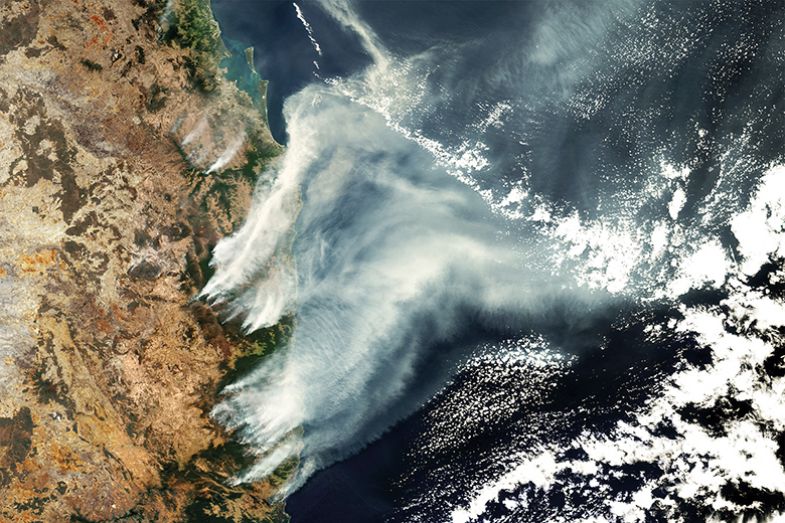
QUT’s Sheil acknowledges the “countervailing forces” against climate advocacy: “There is a lot of vested interest in the government’s not doing things.” But universities must safeguard “the vested interests of the future generation”, she insists.
UTS’ Brungs agrees that the fires have given universities an opportunity “to prosecute the case around climate change”, but stresses that the responsibility to respond goes beyond government: “It’s brought home to an even broader section of the Australian community that they can take leadership in this.”
He says that in the lead-up to last September’s global climate strikes, UTS ran a series of public lectures outlining research findings regarding climate change. The idea was to highlight information about how “you – not someone else, you – can take accountability for helping stop climate change. Here’s how you can contribute now – not in the future but now.”
Brungs says that this was an important message to project, both to a research community that thinks its responsibility is “to do some research that’ll come out in 10 or 15 years’ time”, and to a broader community that thinks “the government will fix the problem if we shout at them loudly enough. We forget that all of us have a personal responsibility. There are lots of ways that we can contribute now.”
The ANU’s Howden says that in response to the devastating bushfires, Australian universities must stick to their guns, build relationships with industry and government and cultivate reputations as trusted advisers, so that they are more likely to be heard “when the crunch comes”.
“The challenge at the moment is clearly political,” he says. However, the bushfires are among the “very real indicators of the massive cost of climate change” that are starting to become apparent.
“It’s swayed a lot of people who were sitting on the fence,” he says. “It’s impacted on the language of the people who previously didn’t really buy into the topic. The whole spectrum of different responses has moved towards acknowledging that climate change is something we have to deal with, and deal with right now.”
john.ross@timeshighereducation.com
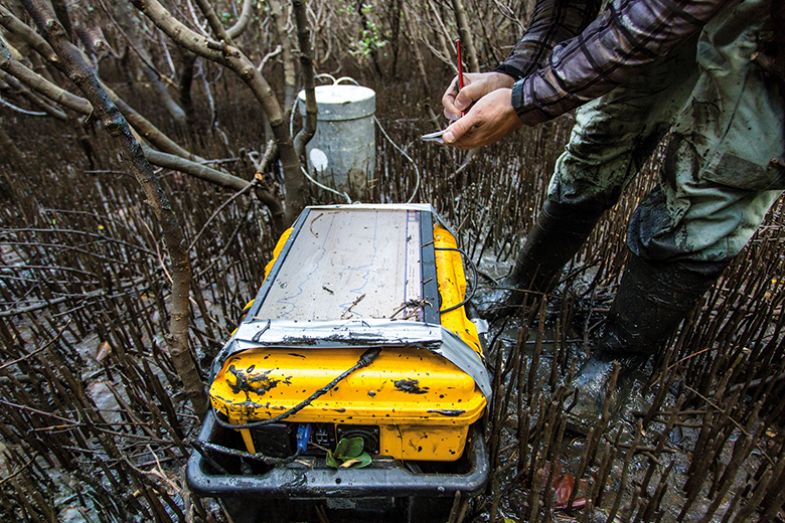
Acclimatising to change
A sample of Australian universities’ bushfire and climate change activities
Forecasting
La Trobe University is developing devices that compare airborne smoky “phenol” compounds with those found in smoke-affected grapes, to predict fire impacts on vineyards and give growers a heads-up on whether to harvest their vines.
The University of Southern Queensland’s Ravinesh Deo is harnessing artificial intelligence to address India’s water management issues, using deep learning algorithms, satellites and water demand data to help predict extreme climate events in a country where agriculture consumes most available water.
UNSW Sydney’s Digital Grid Futures Institute is developing an early bushfire detection system harnessing cheap, long-range drones. They patrol bushfire-prone areas equipped with sensors that identify atmospheric changes likely to cause fires, with the data transmitted to artificial intelligence systems that create “heatmaps”.
Mitigation
Many Australian universities are investigating the sequestration potential of mangroves, seagrass and salt marshes. Pound for pound, these “blue carbon” ecosystems absorb considerably more CO2 than terrestrial forests, but they are devastated by aquaculture, pollution and coastal development. Complicating matters, climate change can destroy some blue carbon systems while enhancing the sequestration potential of others. Charles Darwin University’s Ben Brown is evaluating the restoration potential of abandoned aquaculture ponds in Indonesia. Researchers from Edith Cowan University and the University of Western Australia have calculated the emissions triggered by a 2010 marine heatwave in Western Australia’s Shark Bay – the equivalent of two coal-fired power plants’ annual emissions, it turns out – and helped quantify the greenhouse gases absorbed and emitted by Australian marine ecosystems. University of Adelaide researchers are mapping South Australia’s blue carbon stocks.
Interest in Aboriginal techniques of managing fire-prone landscapes, a topic of research at many Australian universities, has been spurred by the summer crisis. Charles Darwin University researcher Rohan Fisher says fire management in Australia’s northern savannas has long been undervalued despite huge advances in containing fires and averting greenhouse emissions. Dismissing such traditions as “cultural burning” is patronising, he says: “It is complex and sophisticated burning led by an old culture, which is where that sophisticated understanding is coming from.” Western Sydney University human geographer Jessica Weir says that Indigenous people’s burning methods are “an immensely valuable practice” that everybody can learn from, but she warns against cherry-picking the world’s oldest continuous culture. “The big ideas about how we even think about how we live with nature can have the greatest influence on how we respond to climate change.”
Victoria University is embracing planetary health – the concept that human health is intrinsically connected with the natural systems that support all life – as the underpinning rationale of its research, teaching, outreach and precinct management. “We will embed this in everything we do,” says deputy vice-chancellor Corinne Reid, adding that the summer smoke haze helped encourage staff buy-in. “It’s not an intellectual exercise. It’s something we are all living and breathing.”
Flinders University’s new A$2 million high-tech greenhouse facilitates research aimed at boosting crops’ resilience and micronutrient content on a hotter, drier planet. The facility is clad in plexiglass, a hardy, transparent plastic, with signals from an external weather station used to control the internal environment.
Technology
Queensland University of Technology is working on a pilot plant that produces “green hydrogen fuel” for export to Japan. The project uses photovoltaic arrays to extract hydrogen from non-drinking water, such as seawater, and harnesses it in fuel cells to power vehicles or electricity generators. Ian Mackinnon, a professor in the School of Earth and Atmospheric Sciences, says Queensland is ideally placed because of its abundant sunlight, land, “quality infrastructure” and “accessible brines”.
University of Newcastle spinout company Diffuse Energy produces micro wind turbines to power remote communication equipment. Based on university technology, they can prevent potentially catastrophic dropouts when batteries and diesel backups fail during bushfires.
The University of Queensland is harnessing “quantum dots” – atomic-scale artificial crystals that glow when hit by light – to make highly efficient solar cells that can be applied to curved surfaces. UQ says everyday objects such as windows, car roofs and smartphones could become portable solar cells capable of generating energy indoors and on cloudy days.
University of Technology Sydney’s Deep Green Biotech Hub helps companies use algae, small-scale bioreactors and sunrays to remove carbon dioxide from the atmosphere and produce bioplastics and fertiliser, among other things. A Sydney brewery is using the technology to reduce its CO2 emissions.
Ecology
Charles Sturt University is developing a modelling system for wildlife health, to help creatures adapt to climate change. The system harnesses data streams such as weather forecasts, social media and bioacoustic wildlife monitoring. It could help avert ecological disasters like the 2018 annihilation of one-third of the world’s spectacled fruit bats by a single heatwave.
Federation University researchers have spent a decade monitoring highland forests in Central Victoria and have discovered that overly frequent use of controlled fires to reduce the risks of wildfires puts many species at risk by removing vital habitat.
La Trobe University’s Heloise Gibb, who researches fire’s impacts on insects – and vice-versa – says beetles and bugs help rid forests of fuel, such as dead plants and leaves. And while fires and climate change are decimating insect populations, she found that “tyrant ants” in Australia’s Simpson Desert were bucking the trend, their numbers boosted by the extra heat and more volatile rainfall.
后记
Print headline: A new strategy from the embers
